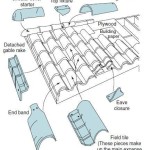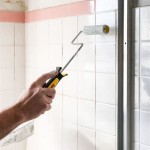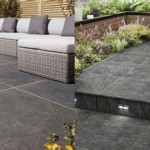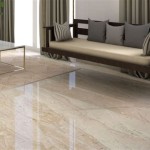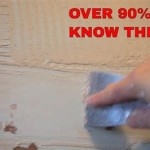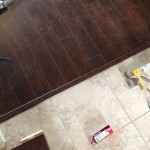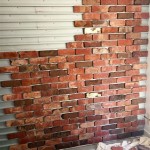Why Cement Board Under Tile is Crucial for a Lasting and Durable Installation
When embarking on a tiling project, particularly in moisture-prone areas such as bathrooms, kitchens, and outdoor spaces, the choice of underlayment is paramount. Cement board, also known as cement backer board, stands out as a superior substrate compared to alternatives like drywall or plywood. This article elucidates the fundamental reasons why cement board is the preferred choice for tile underlayment, ensuring a stable, durable, and long-lasting tile installation.
The longevity and aesthetic appeal of a tiled surface hinge significantly on the integrity of the underlayment. The underlayment provides a stable and solid foundation to which the tile is adhered. It must be able to withstand the stresses of daily use, resist moisture intrusion, and provide a suitable surface for the adhesive to bond effectively. Failing to choose the appropriate underlayment can lead to a multitude of problems, including cracked tiles, grout failure, and even structural damage to the subfloor.
Cement board is manufactured from a mixture of cement, aggregate, and reinforcing fibers, forming a dense and durable material. This composition lends it several key advantages over other underlayment options, making it ideally suited for tile installations in demanding environments. Its resistance to moisture, dimensional stability, and superior bond strength are just a few of the factors that contribute to its widespread use in the construction industry.
Moisture Resistance – A Primary Advantage
One of the most significant reasons for using cement board under tile is its inherent resistance to moisture. Unlike wood-based materials such as plywood or OSB, cement board does not rot, warp, or delaminate when exposed to water. This characteristic is particularly crucial in areas that are frequently exposed to moisture, such as shower walls, floors surrounding bathtubs, and kitchen backsplashes. The ability of cement board to withstand constant moisture contact without degradation significantly extends the lifespan of the tile installation.
Wood products, even those treated with water-resistant coatings, are susceptible to moisture absorption. Over time, this absorption can lead to swelling, warping, and the growth of mold and mildew. These issues not only compromise the structural integrity of the underlayment but also create an unhealthy environment. Cement board, on the other hand, remains dimensionally stable even when wet, providing a consistent and reliable surface for tile adhesion.
The composition of cement board, consisting primarily of cement and aggregate, creates a naturally water-resistant barrier. While it is not entirely waterproof, it exhibits a low absorption rate, preventing water from penetrating deeply into the material. This property helps to protect the underlying subfloor from moisture damage, preventing costly repairs and maintaining the structural integrity of the building.
Furthermore, the use of cement board in wet areas contributes to improved hygiene. Mold and mildew growth beneath the tiled surface can be difficult to detect and eliminate. The moisture resistance of cement board inhibits the growth of these microorganisms, contributing to a healthier living environment. This is especially important for individuals with allergies or respiratory sensitivities.
Exceptional Bond Strength and Tile Adhesion
The surface of cement board is specifically designed to provide an excellent bond for thin-set mortar, the adhesive used to adhere tiles. The rough texture and cementitious composition create a strong mechanical and chemical bond, ensuring that the tiles remain securely in place for years to come. This superior bond strength minimizes the risk of tile cracking, loosening, or detaching from the underlayment.
Compared to smooth or sealed surfaces, cement board offers a significantly better bonding surface for tile adhesives. The textured surface provides more surface area for the thin-set mortar to grip, resulting in a stronger mechanical interlock. Additionally, the cementitious nature of the board allows for a chemical bond to form between the thin-set mortar and the cement board, further enhancing the adhesion.
When tiling over other underlayment options, such as drywall, special primers or bonding agents may be required to improve adhesion. However, even with these additional steps, the bond strength is often inferior to that achieved with cement board. The inherent bonding characteristics of cement board simplify the installation process and provide greater confidence in the long-term performance of the tile application.
The superior bond strength of cement board is particularly important for large-format tiles or natural stone tiles, which are heavier and require a stronger adhesive bond. The weight of these tiles can place significant stress on the underlayment, and a weak bond can lead to premature failure. Cement board provides the necessary support and adhesion to ensure that these tiles remain securely in place, even under heavy use.
Dimensional Stability and Resistance to Movement
Cement board exhibits excellent dimensional stability, meaning that it does not expand or contract significantly with changes in temperature or humidity. This characteristic is crucial for preventing cracks and grout failure in tiled surfaces. The minimal movement of cement board reduces stress on the tile and grout, extending the lifespan of the installation and maintaining its aesthetic appeal.
Wood-based underlayments, such as plywood, are prone to expansion and contraction due to changes in moisture content. This movement can cause stress cracks in the tile and grout, leading to unsightly damage and potential water damage. Cement board, with its minimal expansion and contraction, provides a more stable and consistent base for tile, minimizing the risk of these problems.
The dimensional stability of cement board is particularly important in areas with significant temperature or humidity fluctuations, such as bathrooms and outdoor spaces. The constant changes in these environments can exacerbate the movement of wood-based underlayments, leading to premature tile failure. Cement board provides a more reliable solution in these challenging conditions.
Furthermore, the use of cement board can help to minimize the need for expansion joints in the tile installation. Expansion joints are gaps that are left between tiles to accommodate movement and prevent cracking. While expansion joints are still necessary in some cases, the dimensional stability of cement board allows for a more seamless and aesthetically pleasing tile installation with fewer joints.
In addition to moisture resistance, bond strength, and dimensional stability, cement board offers several other advantages that contribute to a successful tile installation. It is relatively lightweight and easy to cut and install, making it a convenient choice for both professional contractors and DIY enthusiasts. It is also resistant to fire and insects, providing added protection for the structure.
The installation of cement board typically involves attaching it to the subfloor or wall studs using screws or nails. The seams between the boards are then taped and mudded with thin-set mortar to create a smooth and seamless surface. This process helps to prevent moisture from penetrating the seams and provides a consistent base for tile adhesion. Proper installation is essential to ensure the optimal performance of the cement board.
While cement board is generally more expensive than other underlayment options, the long-term benefits it provides far outweigh the initial cost. The increased durability, moisture resistance, and superior bond strength of cement board can save significant money in the long run by preventing costly repairs and replacements. Investing in cement board is a smart choice for anyone who wants to ensure a lasting and beautiful tile installation.
Selecting the correct type of cement board for a specific application is also crucial. Different thicknesses and densities of cement board are available, each designed for specific uses. For example, thicker cement board is typically used for floors, while thinner cement board is suitable for walls. Consulting with a knowledgeable tile professional can help to ensure that the appropriate type of cement board is selected for the project.
In conclusion, cement board is an indispensable component of a well-executed tile installation. Its superior moisture resistance, exceptional bond strength, and dimensional stability make it the ideal substrate for tile in any environment, particularly those prone to moisture exposure. By choosing cement board, one can ensure a durable, long-lasting, and aesthetically pleasing tiled surface that will withstand the test of time. The initial investment in cement board pays dividends in the form of reduced maintenance, fewer repairs, and a more valuable and enjoyable living space.

How To Install Cement Board On A Floor Diy Family Handyman

Tile Installers Select Hardiebacker Cement Board As Most Preferred Brand 2024 02 22 Stone World

Tile Backerboard Material Options Fine Homebuilding

Installing Cement Backerboard For Tile Flooring Hometips

Cement Backerboard Floor Tile Installation Uncookie Cutter

Cement Board What It Is When To Use Home Tips For Women

Thinset Under Cement Board Yes Or No Ord Ceramic Tile

How To Install Hardiebacker Cement Board On Floors James Hardie Pros

Tile Backer Board By The Sq M Square Metre Packs Floor Or Wall Hard Insulation Cement 1200mm X 600mm

Tile Over Plywood Vs Cement Board Learn The Proper Way
Related Posts

